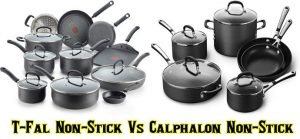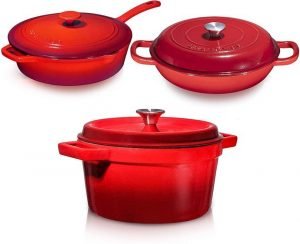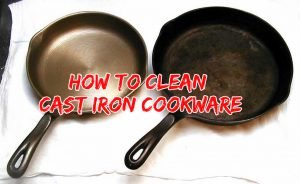How to cook perfect pasta at home? Having a big bowl of delicious pasta on your dining table will definitely make your weekend more enjoyable. Pasta is one of the most common things that anyone can prepare at home with some simple steps. Even if you’re not a professional chef still you can make any pasta dish easily as long as you follow some important rules.
There are a few important things that make a lot of differences in the texture and taste of the pasta. In this post, you’ll get some most useful tips for cooking pasta perfectly for your dearest ones. Whether you prepare your favorite pasta dish every week or once a month these tricks will ensure your pasta tastes wonderful every time. So, keep scrolling to know more.
Secret Tips for Cooking Pasta Perfectly
There are some most effective as well as essential tips for cooking perfect pasta at home. Check these easy pasta cooking tips thoroughly so that you can make your dish more delicious. So, let’s start it.
Pick the Right Shape of Pasta

Choosing the right shape of pasta is a real trick as there’re plenty of pasta shapes available to pick from. However, which pasta shape you need to pick depends on the type of sauce you’re going to prepare.
If you’re planning to toss your pasta in a chunky sauce like ragù or Bolognese, you should pick tubular shape pasta like rigatoni, penne, and macaroni. For smoother sauces, long and thin pasta like spaghetti and linguine are best suited.
Use a Large Pot to Cook Pasta

Using a smaller pot will crowd the pasta making the result a sticky and unevenly cooked mess. So it’s always best to use a large high-sided saucepan or pot to cook pasta. A large pot gives pasta enough space to move and cook perfectly and also makes it easier to control the pasta while cooking.
However, if you’re going to cook a smaller portion of pasta, you can use the suitable size as your requirement.
Fill Up the Pot with Enough Water
Even though many of us think that less water is much easier for boiling, but the actual thing is different. The pasta needs enough space for boiling and at the same time, it should have plenty of water for submerged.
The general rule says that you’ll need to use at least 2½-quarts of water to cook a half-pound of pasta. This is because pasta releases lots of starches during cooking so if there’s not enough water it can become sticky. Moreover, if you don’t add enough water a part of your pasta is possibly undercooked.
Season the Water Generously with Salt
Another important step that you must do while cooking pasta is adding salt to the water. It prevents the pasta from becoming sticky while cooking and adds extra flavor. But how much salt you should add?
Well, you’ll need to add about 2 tablespoons of salt per 5-quarts of water. One more thing, you should add salt only when the water starts to boil. If you put salt before the water begins boiling it will lose its effectiveness and your pasta will be fully unsalted.
Bring the Water to a Rolling Boil

Never add your pasta to the pot when the water just reaches the soft boil stage. It’s because pasta decreases the temperature of the water immediately and that’ll affect the texture of your pasta. So, always remember to add your pasta to the water when it is extremely hot or is at a rolling boil.
Drop the Pasta and Stir Constantly
Once you got the required boiling stage of your water, add the pasta evenly to the pot. The boiling will slow for the next one or two minutes when you dropped the pasta into the pot. At that moment, it’s essential to stir the pasta constantly in order to prevent them from sticking together.
Be Aware Not to Overcook your Pasta
Remember that the boiling time of the pasta depends on the brand, type, shape, and size of the pasta. There’re various processes for testing if the pasta is properly cooked, but the best way is to check the packaging instructions. Most of the pasta comes with an approximate cooking time indicated on the package.
However, sometimes it takes a bit longer to be done but most of the time it takes less than the listed time. So it’s always better to start checking your pasta at least three minutes before the indicated time. Just take a piece of pasta out carefully, allow it to cool down for a second, and taste it.
You want your pasta to be ‘Al Dente’ meaning it’s tender but still firm to the tooth, not completely soft. Also, remember that the pasta will continue cooking after you add it to a hot sauce. So, it’s recommended to remove the pasta from the water slightly before the ‘Al Dente’ stage.
Reserve a Cup of Pasta Water before Draining it
Pasta water is seasoned with salt and filled with starch, so it’s a good idea to use it when you’re trying to set up a sauce. For too thin sauces, adding a little amount of pasta water will help thicken them up and make them smooth.
Chefs prefer to apply this simple technique all the time while finishing pasta. So remember to reserve a cup of the cooking water for your sauce and make your pasta tastier.
Drain Pasta Using a Colander

Once the boiling is done, take the pasta out of the water and let it steam dry for one or two minutes. It’s best to use a colander to drain the cooked pasta properly. Remember to drain the pasta, not to dry it completely otherwise it’ll become sticky and won’t taste good.
Coating with Olive Oil
You can use Extra-virgin olive oil to coat the cooked pasta when it’s still hot. This will add more flavor and will prevent the pasta from sticking together. After that, let the pasta to stay aside for a bit before you add it to the sauce. However, this step is optional, so you can skip it if you don’t prefer to coat your pasta.
Add the Cooked Pasta to the Sauce

As soon as your pasta is cooked and drained, add it to the sauce that has been heated in a hot saucepan. It’s essential to have your sauce ready before you cook your pasta. Cooking the pasta should be the final step in preparing your dish.
Keep the sauce warm in a wide and large saucepan which will be large enough to add the pasta. Do not forget to add a little amount of pasta water and stir all the ingredients together.
Once your cooking is done, pour the pasta into a serving bowl and decorate it with fresh herbs. If you want to add some cheese to your pasta recipe, add the cheese when the heat is off.
Final Words
The main rule of cooking perfect pasta is making it with lots of love and special care. However, pasta doesn’t always need to be heavy on cheese to be delicious and satisfying. You can add some veggies like wild mushrooms, beans, avocadoes, and much more to make your recipes healthier.
One more thing just for you, pasta can be stored for a long time that can be cooked later. If your store your pasta in an air-tight container or an unopened package it’ll stay absolutely fresh for around 2-years or more.



